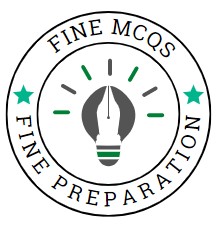21. What are Annual rings?
(a) Circular rings in certain flowers
(b) Circular rings on trees of a temperate region
(c) Circular rings on the branches of a tree
(d) Circular rings on the roots of a tree
22. Asbestos is a group of minerals known for their fibrous nature, used in houses, factories, and clothing for insulation and protection from fire, heat, and electricity. Why are they used for this purpose?
(a) They do not burn
(b) Heat and electricity cannot pass through them easily
(c) Both of them
(d) None of them
23. Term for a bomb that derives its explosive force from nuclear fission as a result of a neutron chain reaction?
(a) Chain reaction bomb
(b) Nuclear bomb
(c) Atom bomb
(d) Hydrogen bomb
24. Which energy is released through the fission or fusion of atomic nuclei?
(a) Atomic Energy
(b) Radioactive Energy
(c) Nuclear Energy
(d) Heat Energy
25. A nuclear reactor is a device for:
(a) Fission creation
(b) Fusion reaction
(c) Splitting nuclear elements
(d) Producing nuclear energy in a controlled manner
26. What of the following is nuclear waste?
(a) Radioactive and toxic by-products of nuclear energy
(b) Radioactive and toxic by-products of the nuclear-weapon industry
(c) Both of them
(d) None of them
27. The center of an atom, which contains particles called protons and neutrons, is called:
(a) Nucleus
(b) Nuclei
(c) Nucleon
(d) Centre
28. The lightest particle in the atom is:
(a) Proton
(b) Electron
(c) Neutron
(d) Positron
29. The positively charged particle in the nucleus of an atom is:
(a) Proton
(b) Neutron
(c) Electron
(d) Positron
30. What is called the substance that cannot split chemically into simpler substances?
(a) Atom
(b) Molecule
(c) Element
(d) Ion

